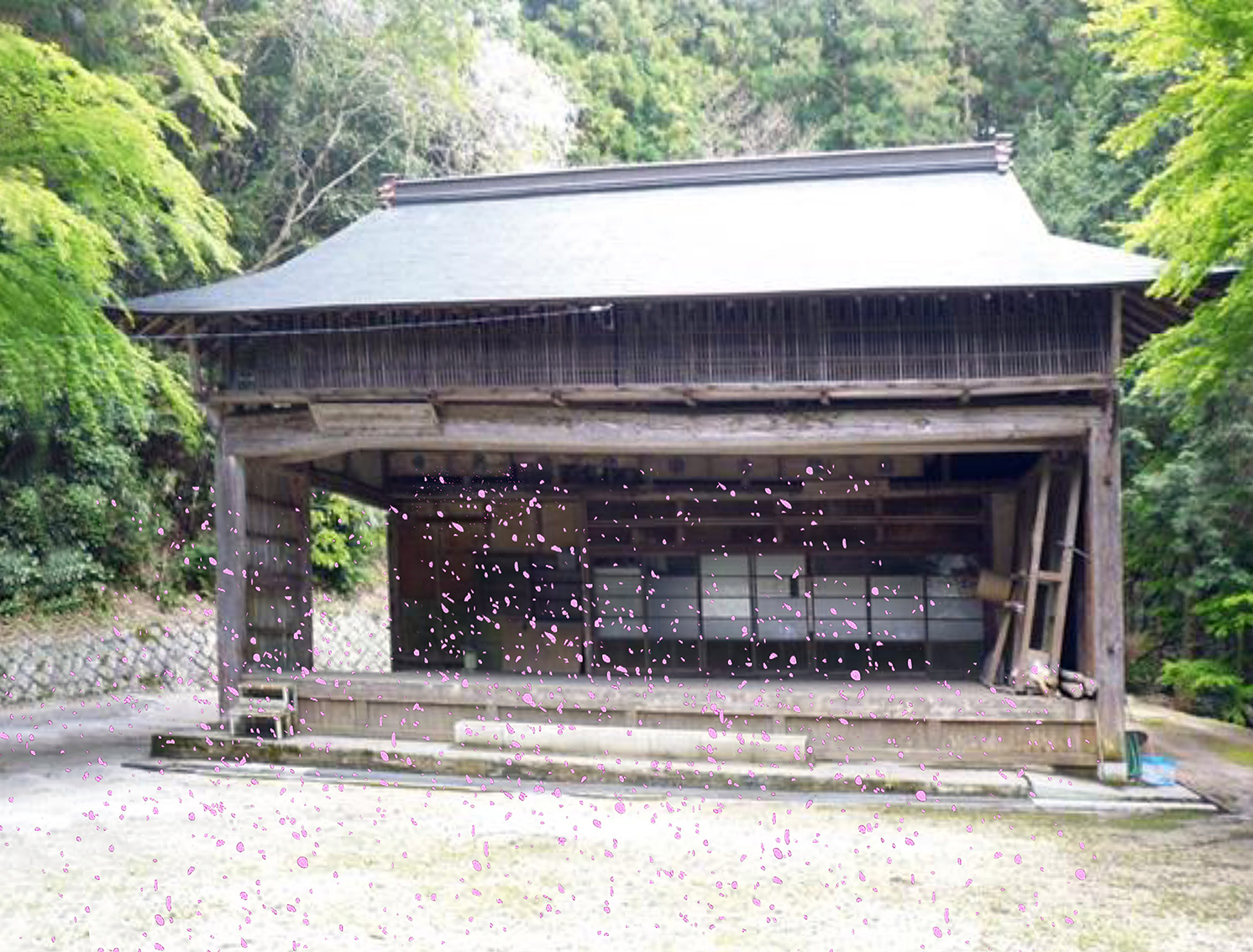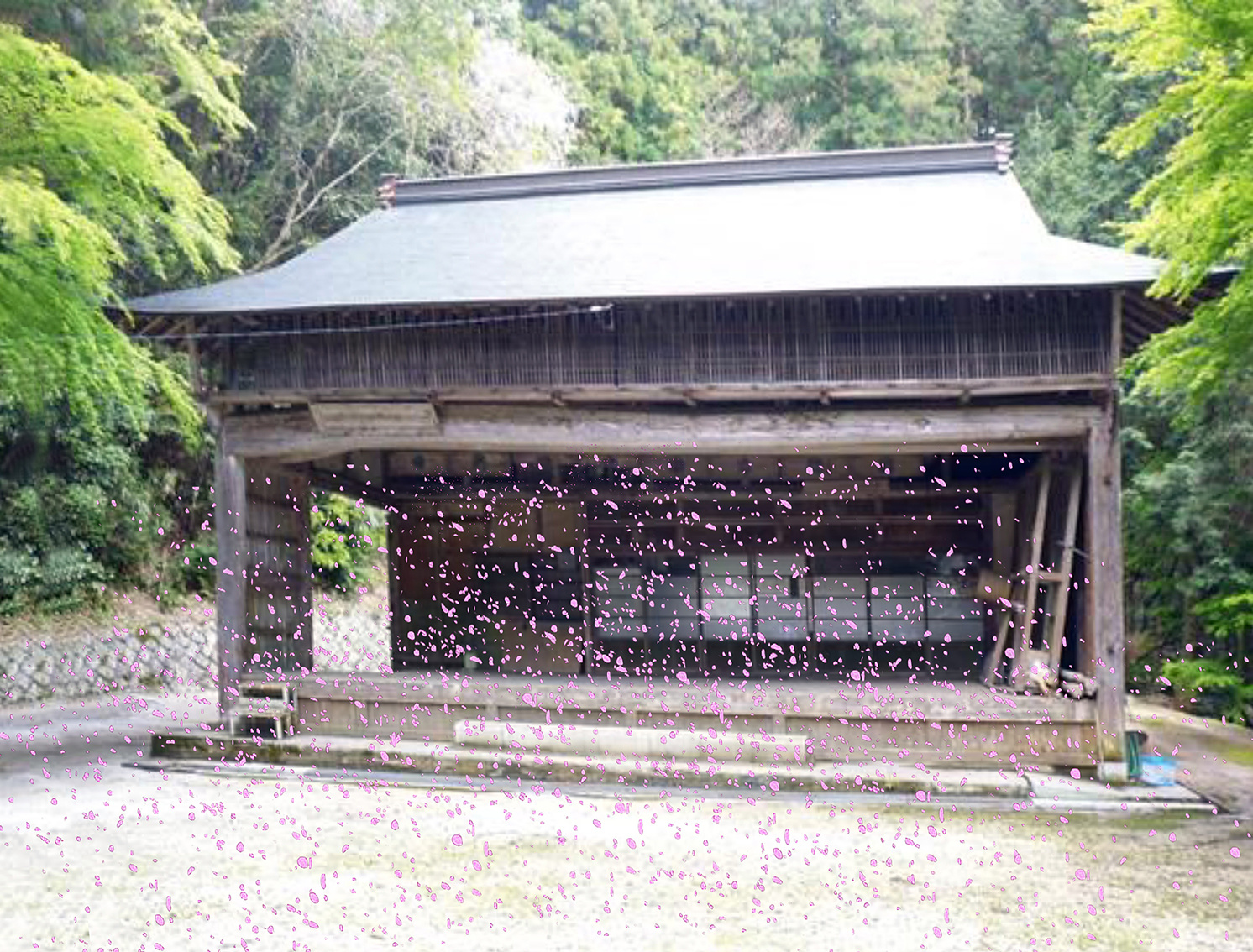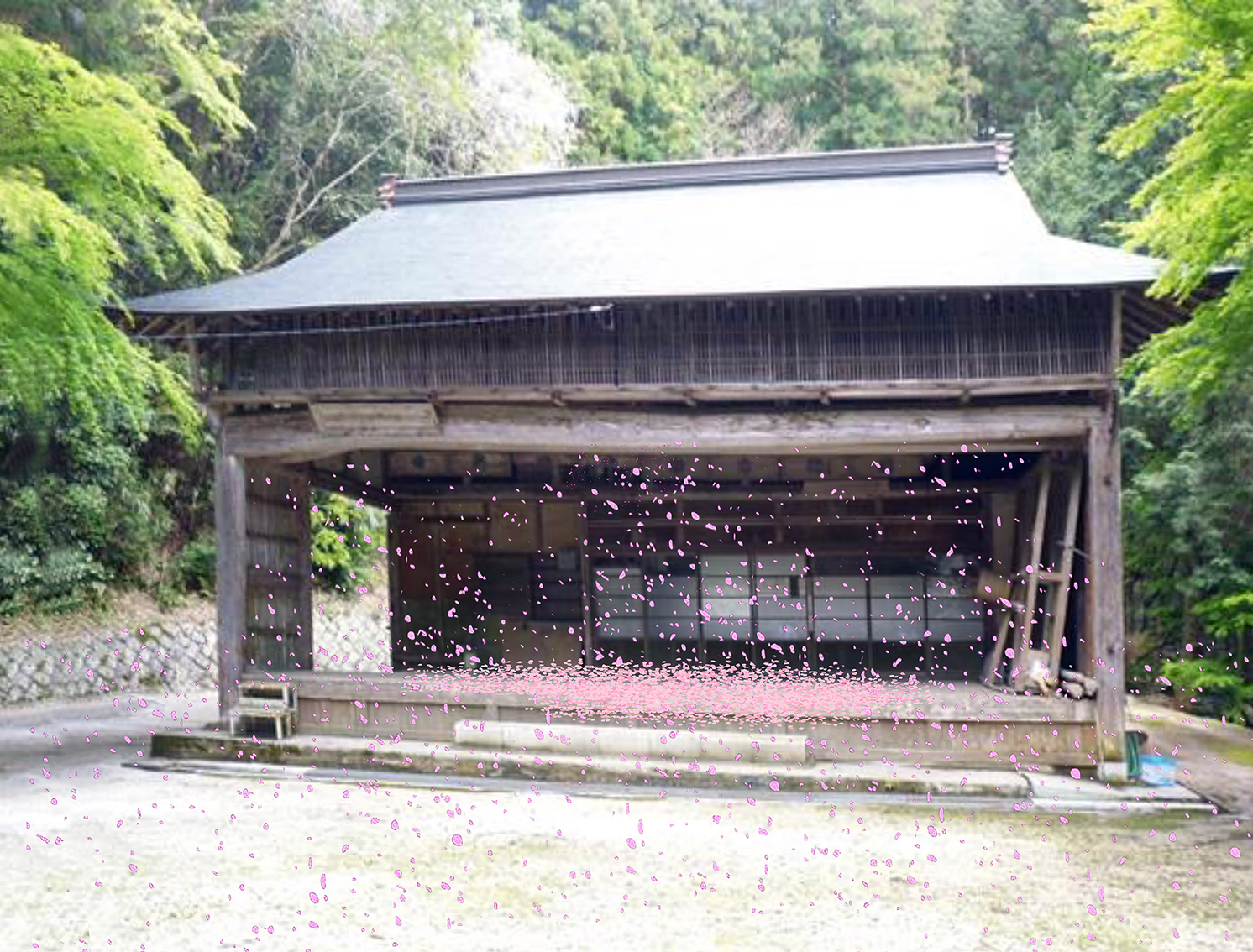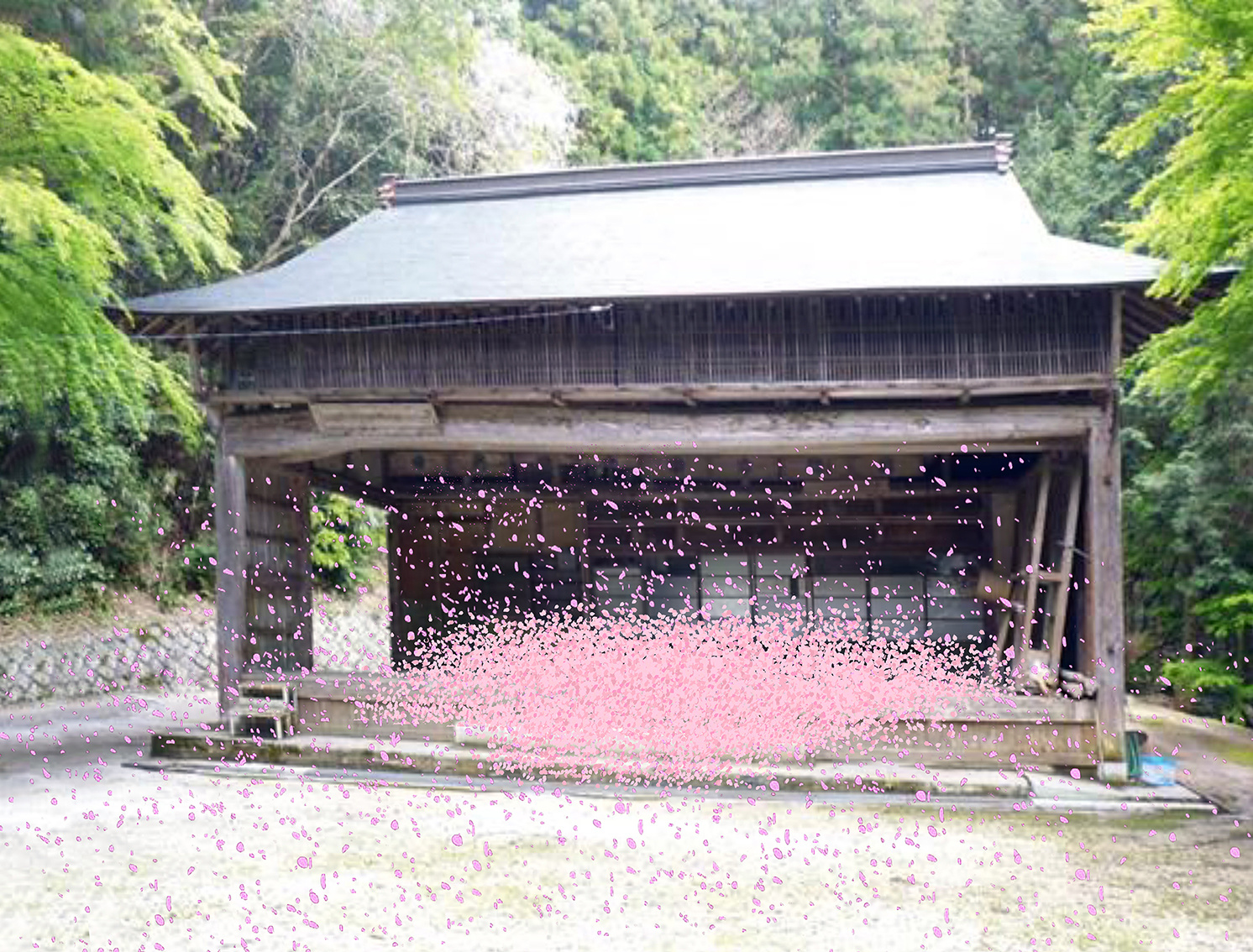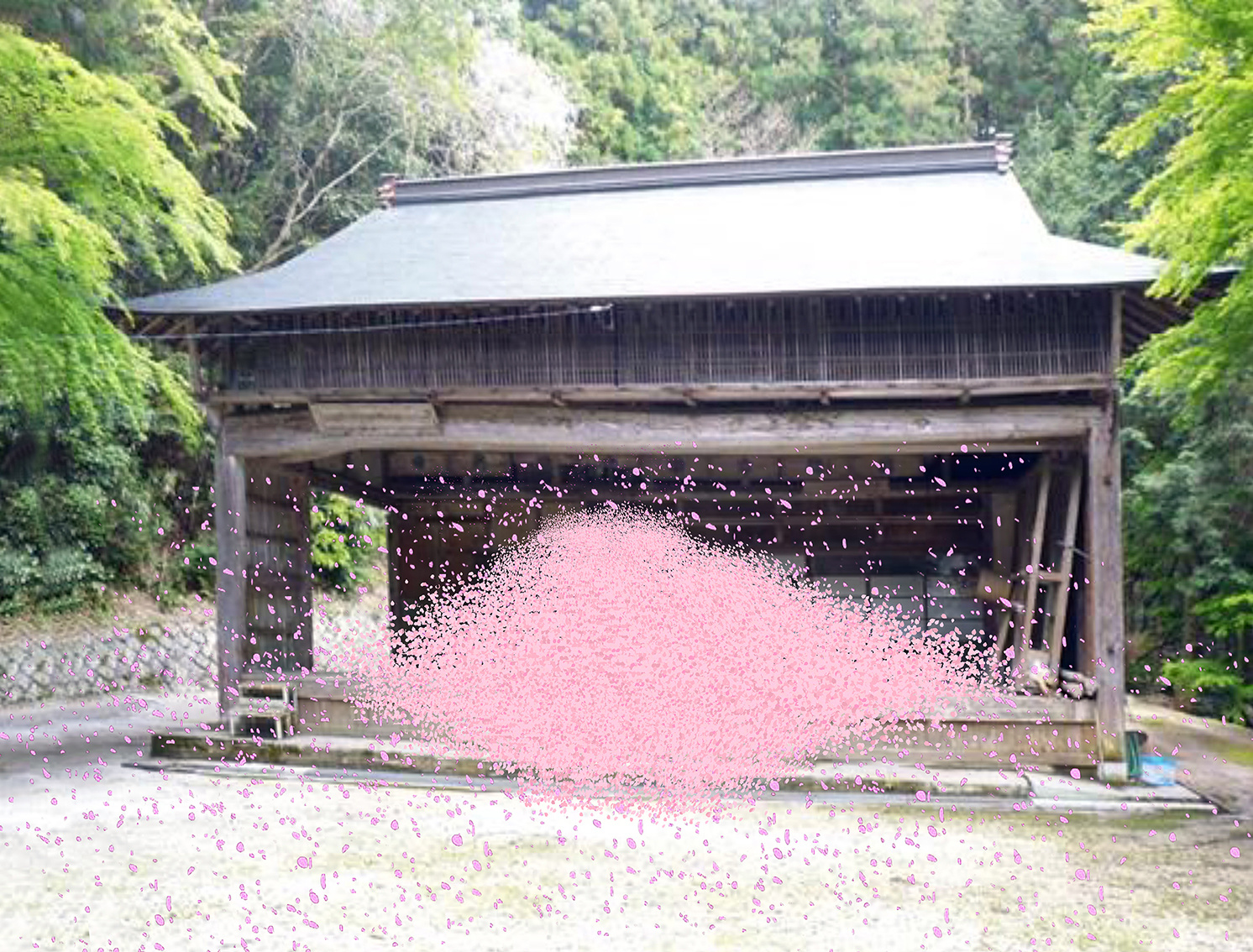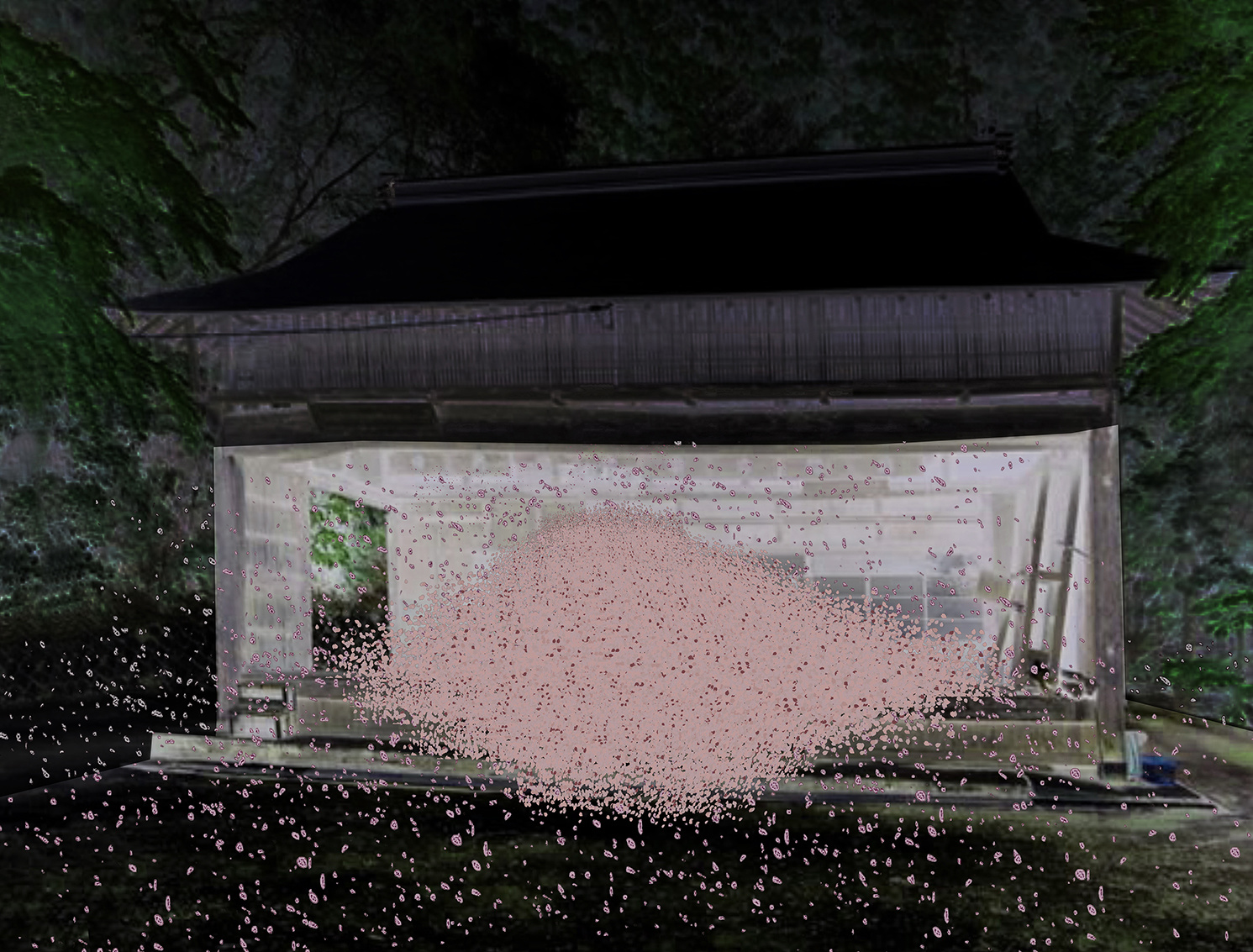
NAB
2020
公益財団法人豊田市文化振興財団主催のコンペ「農村舞台アートプロジェクト」の応募案。
農村舞台アートプロジェクトとは、2010年豊田市北部から東部にかけて現存する国内有数の農村舞台群を、地域の文化資源として活用し、アートで新たな市民文化を発信するアートイベントとしてスタートしたもの。
今回のコンペのテーマは「紙」であった。
*農村舞台とは、江戸時代後半から昭和の初めにかけて、農山村の娯楽の場として神社境内などに建てられた舞台で、北は北海道、南は宮崎・鹿児島まで、日本各地に広く分布する。特に愛知県山間部は芸能の宝庫と言われ、神事や芸能が農村舞台で演じられてきた(以上、コンペ要項より抜粋)。
concept
愛知県豊田市を流れる矢作川流域は、古くは衣(挙母/ころも)の里と呼ばれ、西三河の政治・文化の中心として栄えてきた。また、現在豊田市挙母町と呼ばれているこの地には、江戸時代に挙母藩が置かれ、三宅氏が桜城を築いたという歴史がある。
三河地方を代表するお祭りの一つで、豊田市で毎年10月に行われている挙母祭りは、その起源は江戸時代の寛永年間(1624~43)に始まったと言われるほど古く由緒あるお祭りで、紙吹雪が大量に舞うことでも有名である。紙吹雪を撒くのが始まったのは、明治時代に山車の順番を巡る騒動が切っ掛けと言われているが、一番最初の山車を「華車(はなぐるま)」といい、紙吹雪を撒いて行う演出には、紙への感謝の気持ちが込められているという。
また、鎌倉時代中期の文永二年七月七日(1265.08.19)に藤原為家などによって作成されたといわれている「白川殿七百首」には、公卿であった源具氏によって、この地に関する以下の歌が詠まれている。
立ちかえり 猶みてゆかん さくら花 衣の里に にほふ盛りは
以上のように、この地の歴史には、「桜」「華」「紙吹雪」が深く関わっている。
ここで提案するのは、農村舞台内部で、期間中、桜の花びらが風で舞い落ちるように、紙吹雪を常に降らせ続けるというインスタレーションであり、二週間の会期の最後には、舞台の上に桜吹雪の山が出来上がるというものであった。
夏に桜吹雪が、それも建物の中で延々と降り続くというこのインスタレーションは、挙母祭りへの期待感を誘うものであり、地域の歴史と自然に宿る神々に感謝を示すものであった。
一見馬鹿馬鹿しく単純に思えるこのインスタレーションも、相当入念な準備が計画されていた。
A proposal for the "Rural Stage Art Project" competition sponsored by the Toyota City Cultural Promotion Foundation.
The Rural Stage Art Project was started in 2010 as an art event that utilizes the existing leading rural stage groups in Japan from the northern part to the eastern part of Toyota City as a cultural resource of the region and disseminates a new civic culture through art.
The theme of this competition was "paper".
* The rural stage is a stage built in the precincts of a shrine for entertainment from the latter half of the Edo period to the beginning of the Showa era, and is widely distributed throughout Japan, from Hokkaido in the north to Miyazaki and Kagoshima in the south. In particular, the mountainous area of Aichi Prefecture is said to be a treasure trove of performing arts, and Shinto rituals and performing arts have been performed on the rural stage (excerpted from the competition guidelines).
concept
The Yahagi River basin that flows through Toyota City, Aichi Prefecture, was formerly known as the village of clothing (Koromo), and has prospered as the political and cultural center of Nishi-Mikawa. Also, in this area, which is now called Koromo-cho, Toyota City, the Koromo domain was placed in the Edo period, and Mr. Miyake has a history of building Sakura Castle.
One of the representative festivals of the Mikawa region, the Koromo Festival, which is held every October in Toyota City, is an old and venerable festival that is said to have started in the Kanei era (1624-43) during the Edo period. It is also famous for the large amount of confetti. It is said that the confetti started to be sprinkled in the Meiji era due to the troubles to determine the order of the floats, and the first float is valuable and is called "Hanaguruma”. It is said that the production of sprinkling expresses gratitude for the paper.
In addition, the "Shirakawaden 700 songs", which is said to have been created by Fujiwara no Tameie on July 7 (19th October,1265) in the middle of the Kamakura period, was written by Tomouji Minamoto, who was a lord of the Kamakura period. The following song about is written.
It is almost like returning to the village of clothing to smell Sakura (cherry blossoms).
As mentioned above, "cherry blossoms," "flowers," and "confetti" are deeply involved in the history of this area.
The proposal here is an installation that keeps confetti falling inside the rural stage, just like the petals of cherry blossoms fluttering down in the wind during the period, and at the end of the two-week session, the petals fluttered on the stage will be a mountain.
This installation, in which cherry blossom blizzards continue to fall in the building in the summer, was a source of anticipation for the Koromo Festival and a gratitude to the gods of the region's history and nature.
This installation, which at first glance seems simply a kind of ridiculous, was carefully planned and prepared with considerable care.
■空間インスタレーション
主材:紙
■ installation art
material: paper
*この作品は1次審査を通過し、最終2次審査で残念ながら落選となりましたが、今後他の場所での実現を目指しています。
*This work passed the 1st screening ,but unfortunately it is rejected in the final 2nd screening, but we are aiming to realize it in other places in the future.

